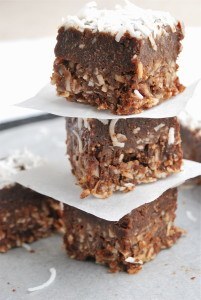10 Vaccination Myths and Lies Debunked
One of the biggest lies ever told is that vaccines eradicated disease; improved sanitation eradicated disease. This lie is the big falsehood upon which many other myths are propagated. When lies are repeated enough, they come to be taken as the truth.
…in the big lie there is always a certain force of credibility; because the broad masses of a nation are always more easily corrupted in the deeper strata of their emotional nature than consciously or voluntarily; and thus in the primitive simplicity of their minds they more readily fall victims to the big lie than the small lie, since they themselves often tell small lies in little matters but would be ashamed to resort to large-scale falsehoods. It would never come into their heads to fabricate colossal untruths, and they would not believe that others could have the impudence to distort the truth so infamously. Even though the facts which prove this to be so may be brought clearly to their minds, they will still doubt and waver and will continue to think that there may be some other explanation. For the grossly impudent lie always leaves traces behind it, even after it has been nailed down, a fact which is known to all expert liars in this world and to all who conspire together in the art of lying.” -Adolf Hitler
Truth has a way of winning out when given enough time, but time is not a luxury all of us can afford, not with mandatory vaccinations looming. Some of the greatest deceptions have spanned centuries. In every generation, there are people said to have been “ahead of their time.” In hindsight, we honor the most notable historical figures that helped to unravel the delusions under which progress faltered. Racism, sexism, ethnocentrism, superstitions, and other forms of abject ignorance have taken centuries to fade away, these and other illusions die hard. There are still thousands of people who ardently believe the earth is flat, and just as absurd, there are thousands of people who still believe that the sun orbits the earth.
The majority of people believe that the anti-vaccine movement is regressive and not progressive. Pro-vaccine propaganda, propped up by government mandates and CDC recommendations has come to dominate popular opinion. Most people have come to believe these myths and have internalized them. In order for us to get to the truth, we must first absolve others and ourselves of these delusions.
Vaccines are Safe
Like all pharmaceuticals, vaccines can have potentially devastating side effects. Adverse reactions can and often are far more serious than the diseases they are intended to prevent. Your chance of dying from measles with modern healthcare is nearly zero, and yet hundreds have died from the MMR vaccine.1
Jonas Salk, the inventor of the polio vaccine, testified before Congress that the mass immunizations aimed at eradicating polio caused most of the polio cases since 1961. How can the polio vaccine be safe or effective when it causes the disease it is intended to prevent?2
In a bad year, India has fewer than a thousand cases of polio. In fact, India was certified polio-free in 2014 and hasn’t had a case of polio in three years.3 In their efforts to eradicate polio in India, the Bill and Melinda Gates Foundation’s mass immunization campaign permanently crippled well over 50,000 children. It could take more than a century for polio to cause the kind of devastation this polio immunization campaign caused. These are not the results of a safe practice.4
Vaccines Are Effective
There is a saying that no vaccine is 100% effective. This saying implies that vaccines are close to this number, but in truth, vaccines are not tested for effectiveness at all. If a vaccine generates antibodies, it is considered effective; however, antibody generation does not equate to a numerical percentage of disease prevention. One of the best indicators of vaccine ineffectiveness is that the same vaccines are given over and over again. If a vaccine guaranteed immunity, why would it have to be given again? Vaccination carries with it serious risk of injury, including death. If you’re going to bet your life on it, wouldn’t you want the vaccine to actually work?5
Our immune systems rely on far more than just antibodies to fight pathogens. An individual dying of AIDS has no shortage of antibodies in their blood; their body produces vast numbers of antibodies and yet that doesn’t keep them alive when their white T-cells have been decimated by the HIV virus. Antibodies aren’t everything. Just because vaccines generate antibodies, that doesn’t mean they are effective.
Your Doctor Knows More About Vaccines Than You Do
No doubt your doctor has strong opinions about vaccination; but do they know anything about them? Probably not. The science of immunology, virology, or advanced toxicology is not taught to most medical students. If anything about vaccines is taught, only one side of the scientific debate about vaccines is ever presented to medical students.6
If you ask the average medical doctor about MRC-Cells, WI-38 Cells, vaccine adjuvants, or vaccine court, you will probably be met with deafening silence. Doctors are typically profoundly ignorant about immunizations. If you spend ten minutes researching vaccine ingredients, you are likely to know more about vaccines than your doctor. If you read a vaccine insert, you are likely to know more about vaccines than your doctor. If you spend five minutes speaking to a naturopathic or homeopathic doctor or even a chiropractor, you will find that they know far more about vaccines than your conventional medical doctor.7
Mercury Was Removed From Vaccines
This actually never happened. Mercury was removed from some vaccines and replaced with aluminum. Other vaccines, like the flu shot, still contain mercury under the name thimerosal. Thimerosal is 49% ethyl mercury. Mercury is 1,000 times more toxic than lead, and it is still present in a number of vaccines and other pharmaceuticals.8
If You Are Vaccinated and Get a Vaccine Preventable Disease, You Will Catch a Milder Case of the Illness Due to Having Been Vaccinated
Actually, if you were vaccinated and then caught the disease, you either caught it from the vaccination itself, or if time passed, the vaccine failed and you caught it from someone else who had been recently vaccinated and was shedding the disease.
There is no evidence to suggest that injecting the body with toxins and pathogens makes our immune system stronger, but there is a growing body of evidence that suggests the highly vaccinated are more vulnerable to both chronic and acute diseases.
Vaccine Manufacturers are Held Accountable for Vaccine Injuries
In 1986, the Childhood Vaccine Injury Act made vaccine manufacturers immune from all liability due to vaccines. Instead of holding the manufacturers accountable, vaccines are taxed, and these taxes go to the Vaccine Injury Compensation Program.9 In order to receive compensation for vaccine injury, one must win in Vaccine Court. Vaccine Court is a rigged system of compensation designed to protect the vaccine industry and deny claims brought forth by parents and family members of dead and crippled children and adults. There is a better than 80% chance that a claim will be denied by vaccine court. If claims are paid out, compensation rarely covers medical expenses. If a vaccine kills, the maximum payout is $250,000.10 Isn’t human life worth more than a quarter of a million dollars?
Adverse reactions to vaccines can also result in agonizing, rare, exotic, and crippling diseases. A few examples of these are Guillain Barre Syndrome (an immune disorder in which the body attacks the nervous system), Transverse Myelitis (a neurological disorder which can result in paralysis, urinary retention, and loss of bowel control), Miller Fisher Syndrome (which can result in respiratory failure, abnormal muscle coordination, and a myriad of other symptoms) and Intussusception (which is caused by the intestine being pulled inward, onto itself, which can be fatal, and it is always excruciating).11
The payouts awarded by vaccine court vary on a case-by-case basis. When considering how miserable these diseases make people, and how expensive treatment is, one would think the compensation would be greater. The following payouts were advertised by Maglio, Christopher, and Toale, P.A.:12
- From 2010 through 2015, this law firm won 11 cases that included death. The smallest payout was $100,000 and the largest payout was $400,000. The average payout was $218,792.50. Cases with a payout over $250,000 included payment for injuries as well.
- From January through November 2015, this law firm won 46 cases that included Guillain Barre Syndrome (GBS). The smallest payout for GBS was $60,000 and the largest payout was $807,000. The average payout was $215,829.70.
- From January through November 2015, this law firm won 6 cases related to Transverse Myelitis. The smallest payout was $85,000 and the largest payout was $537,500. The average payout was $184,750.
- From January through November 2015, this law firm won 2 cases related to Miller Fisher Syndrome. Each had a payout of $125,000.
- From January through November 2015, this law firm won 1 case related to Intussusception. It was awarded an annuity totaling $58,106 to be paid over four years as well as an additional lump sum of $10,221.19 to cover a Kentucky Medicaid lien.
The Anti-Vaccine Movement is a Fad
Objections to inoculation and vaccination have been around for as long as inoculation and vaccination have been practiced. Typically, when we hear the term conscientious objector we think of someone who is opposed to military service during wartime. Centuries ago, the term referred to someone who was opposed to getting inoculated, or getting their children inoculated. The anti-vaccine movement is an old movement, and it is not going away. We will not be silenced, and we know the truth is on our side. We know it is only a matter of time before the truth about vaccines is known by the majority of people, not just by a select few who have taken the time to do the research.13
The Internet is Full of Misinformation Regarding Vaccines
Have you heard this tired cliché, “Don’t believe everything you see on the Internet”? Actually this is sound advice, but you shouldn’t believe everything you see on TV either, or everything you read in books, everything your doctor tells you, or even everything you read in peer-reviewed scientific literature. Misinformation is everywhere. Falsehoods, half-truths, and outright lies are not solely limited to the Internet.
An informed opinion demands familiarity with both sides of an issue. No one, not even your doctor will ever care about your health or your children’s health as much as you do. Both sides of the vaccine debate are easily accessible via the Internet. Even anti-vaxxers agree that the Internet is full of misinformation about vaccines.
Misinformation abounds everywhere, especially on websites like the CDC, FDA, and NIH. The truth is out there for those willing to go and find it. A good place to start is to look up vaccine ingredients. Isn’t it a good idea to know what is being injected in you or your children?
The Unvaccinated Spread Disease to the Vaccinated
This lie spread by vaccine manufacturers is another believed and repeated by so many only because they’ve heard it so often. Infectious disease is typically spread by person-to-person contact. A healthy individual doesn’t spread disease; sick people do. Rarely, there are cases of those who are disease carriers, individuals who exhibit no symptoms, but are capable of spreading disease. There is no evidence to suggest that if these individuals were vaccinated, that this would happen less often. On the contrary, it is the recently vaccinated who spread disease through viral shedding.
Yes, viral shedding is a real hazard.14 The recently vaccinated often spread the very disease that the vaccine is intended to protect against. When this happens, the unvaccinated are typically blamed for the outbreak. A good example is the recent Disneyland measles “epidemic”.15
If there is no vaccine for the strain of the virus responsible for the outbreak, the same tactic is used: blame the unvaccinated. In the absence of television advertisements, every major or minor disease outbreak engenders free marketing. Despite high vaccination rates, it is the unvaccinated who are blamed for disease.
This blame is assigned by the mainstream media outlets whose bills are paid by Big Pharma. Defying all logic, the public is told that vaccines can only work if everyone is vaccinated.16 Considering how interconnected the world is these days, even if everyone in our respective country of origin were to be vaccinated there would still be unvaccinated foreigners traveling people would encounter, and the gullible could place blame upon strangers in strange lands for spreading disease. The fight for 100% worldwide vaccination is unattainable, so there will always be scapegoats.
Scientists and Doctors Agree that Vaccination is the Best Defense Against Infectious Diseases
Another myth perpetuated by the mainstream media and Big Pharma is that there is a consensus among scientists and medical professionals that vaccines are the best protection available against disease. In actuality, there is no consensus. Vaccination is hotly debated by doctors and scientists, especially those who actually study vaccination.17 When it’s Mom and Dad against the world, anti-vaxxers are framed by the mainstream media as anti-science.
In order for science to progress, competing scientific explanations must be evaluated on their own merits, not dismissed or accepted based upon their initial popularity in the scientific community. There are, in fact, so many doctors and scientists opposed to vaccines that we have produced an ongoing series of articles giving voice to their expert opinions.18 We are unlikely to ever run out of new experts we can draw upon to continue this series. Obviously, there are more than a handful of experts opposed to vaccination.
Conclusion
One cannot eradicate diseases by way of immunization. Injecting pathogens and toxins into the bloodstream bypasses the body’s natural defenses, and leaves us more vulnerable to injury and death than natural exposure to the disease ever could. When we are intimidated into vaccinating because diseases like measles used to kill people, we aren’t being given all the relevant facts. Measles are unlikely to kill anyone these days due to modern medical care. It’s true that antibiotics are useless against viral infections, but when someone is battling measles, they are more vulnerable to secondary infections, like pneumonia. It is another modern day myth that the measles vaccine saves lives. Your chances of dying from measles is nearly zero. The same cannot be said of the measles vaccine.
There are many myths surrounding vaccines. They will continue to be perpetuated until those of us who are in the know challenge them wherever and whenever we hear them. The best defense against lies is the truth, and the best defense against bad ideas are better ideas. In the absence of truthful reporting, it is up to us to be the media before vaccine hysteria spreads ever further though vaccine mandates. If we cannot be deceived, we are to be coerced – that is until we can shed light upon these vaccination myths. If you’ve recently been vaccinated, or may be getting immunized soon, check out How To Detoxify and Heal From Vaccinations – For Adults and Children.
Related Reading:
- Doctors Against Vaccines – Hear From Those Who Have Done the Research
- Vaccines, Retroviruses, DNA, and the Discovery That Destroyed Judy Mikovits’ Career
- How Plumbing (Not Vaccines) Eradicated Disease
- The MMR Vaccine – A Comprehensive Overview of the Potential Dangers and Effectiveness
Sources:
- Can Measles Vaccine Cause Injury & Death? – National Vaccine Information Center ↩
- The Polio Vaccine Myth: ‘The Vaccine Stopped Polio’ – Collective Evolution
Updates on CDC’s Polio Eradication Efforts – CDC ↩ - Bill Gates’ Vaccine Program Caused 47,500 Cases of Paralysis Death – NSNBC ↩
- Voodoo Science: The Myth of Vaccine Efficacy – Age of Autism ↩
- Doctors Learn to Talk Vaccines – Wall Street Journal ↩
- Vaccines: What Your Doctors Know and Don’t Know – Vactruth ↩
- Ten Lies Told About Mercury in Vaccines – Trace Amounts ↩
- Supreme Court vaccine ruling: parents can’t sue drug makers for kids’ health problems – CBS News ↩
- History of Anti-Vaccination Movements – History of Vaccines ↩
- Studies Show That Vaccinated Individuals Spread Disease – Weston A. Price ↩
- Journalist Infuriates Readers While Reporting on Massachusetts Whooping Cough Outbreak – Inquistr ↩
- Pertussis Outbreak Among Vaccinated Preschoolers Raises Alarm – Medscape ↩
- Doctors Against Vaccines – Organic Lifestyle Magazine ↩
- Scientists Against Vaccines – Organic Lifestyle Magazine ↩
- Hitler and the ‘Big Lie’ – The Holocaust Historiography Project ↩
- FAQ- Topic: Vaccine Injury Compensation – National Vaccine Information Center ↩
- Disorder Index – National Institute of Neurological Disorders and Stroke
Our Firm’s Vaccine Case Results – Maglio, Christopher, & Toale, P.A. ↩


